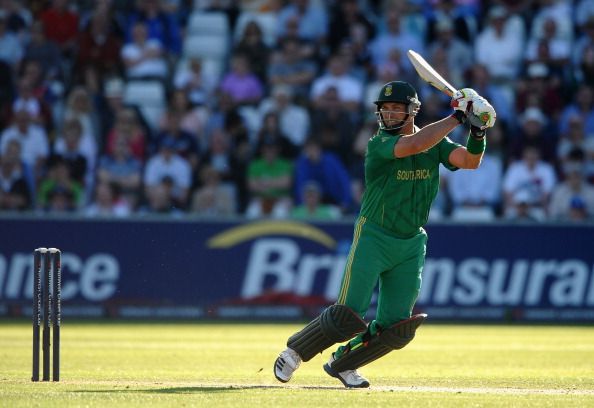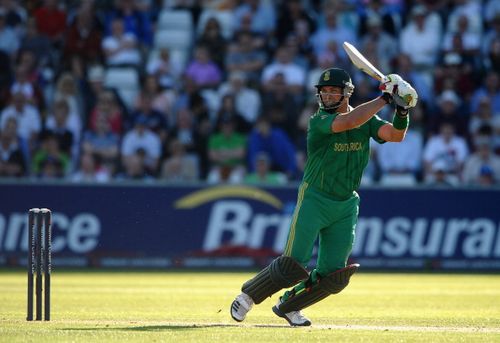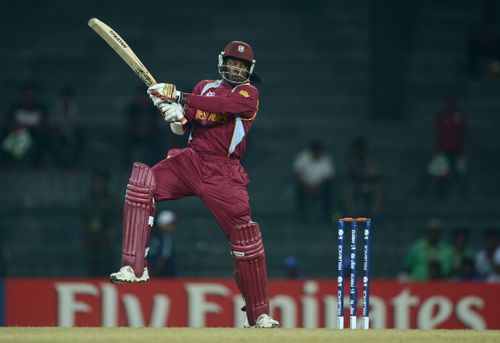
Top ten batting all-rounders of the past four decades

Ideally it is best suited for every team to have a batting and a bowling all rounder in its line-up, more so, for its stability. A bowling all rounder is one who can fit into the role of a specialist batsman, batting at No.7, thereby providing batting depth to the side. Since, he is also a strike bowler, you do not require a fifth bowler in the side who would end up messing with the bat like Danny Morrison or Courtney Walsh. Like-wise, a batting all rounder dons the role of not only a specialist batsman but also is good enough to enact the role of a fifth bowler who can be trusted for getting wickets. If your team has both bowling and batting all-rounders, then you can have luxury of eight batsmen playing for you which means your concern would be only about the last three in the playing eleven. Nowadays, even the tail-enders are able to whack the bowling if they don’t find it comfortable defending good balls.
Now, before naming the top ten batting all-rounders of the last four decades, I would like to clarify one thing. I have not selected any of the part-time bowlers here. You can argue even part time bowlers are all-rounders. Though it might be partially true, they cannot be called as genuine all-rounders, simply because you cannot expect them to take wickets. They are normally used to slow down things rather than to pick wickets by a fielding captain, when his regular bowlers take a pounding at the hands of the opposite team. But, on the whole, employing part timers is always a risky thing to be attempted. They may look good for a couple of overs or a bit more, but asking them to bowl repeatedly at a stretch for more than five overs would only put the bowling side in a dismal state. So, the cricketers like Sachin Tendulkar and Vivian Richards have not been included here since they are not treated as genuine all-rounders, though they can bowl as well. And I have considered only those all-rounders who have/had been good in both tests and ODIs.
So, let me reveal the list of top ten batting all-rounders of the last forty years or so (not necessarily in the same order).
Sanath Jayasuriya:
Prior to the Australian tour 1995-96, Sanath Jayasuriya was in the Sri Lankan team more as a bowler who could bat. Later, it was the Lankan Captain, Arjuna Ranatunga who, having realized Jayasuriya’s big hitting ability, made him bat at the top of the order as one of the openers. The move clicked big time and because of his attacking batting, Sri Lanka was able to win the Wills World Cup in 1996 at Lahore. Since then, he evolved into one of the best batsmen in both formats of the game, thrashing the bowlers all over the park. It was then he came into reckoning as a proper batsman who could also bowl with wicket-taking abilities. His quick left arm spin has troubled even top order batsmen.
Runs: Tests - 6973, ODIs - 13430
Wickets: Tests – 98, ODIs - 323
Carl Hooper:
This former West Indies batsman was hailed as the next Vivian Richards during those days purely for his batting abilities, though he never did justice to his talent. His foot work was one of the best in the game, especially against spinners. When most of the top guns of the Caribbean islands retired, he, alongside, Brian Lara crafted some important partnerships, especially in ODIs. He was a great stroke maker with a penchant for hitting boundaries. He was a right arm off spinner, who used to bowl quite intelligently, halting the flow of runs.
Runs: Tests – 5762, ODIs – 5761
Wickets: Tests – 114, ODIs – 193
Hansie Cronje:
This late South African captain might have spoiled his name in the cricketing world due to his involvement in a match fixing scandal. But then we cannot overlook his talent as a genuine batting all-rounder. Hansie Cronje used to bowl at a nice pace, mainly as a second change bowler. He gave enough support to the bowling of Allan Donald and co as a fourth bowler along with Pat Symcox. As far as his batting was concerned, he was one of their best batsmen during his playing days at the top of the order. He was very much known for his batting against the spin bowlers and in particular for his slog sweep with which he used to score loads of runs quite regularly.
Runs: Tests – 3714, ODIs – 5565
Wickets: Tests – 43, ODIs – 114
Ravi Shastri:
This cricketer from Mumbai started his career in international cricket as a No.11 batsman for his team. But then, he developed his batting ability so well that he was given the role of an opener in ODIs. In tests also, though his average was not so good, he had scored some important runs for his side and saved a few matches also. Everybody would recall his contribution with the bat in a test match against Australia in Madras which helped India tie the score. As a bowler, he used his height very efficiently in pitching the ball and the batsmen had their own problems dealing with him.
Runs: Tests - 3830, ODIs – 3108
Wickets: Tests – 151, ODIs – 129

Chris Gayle:
This man from Jamaica, Christopher Gayle, is the most destructive batsman ever seen in cricket and only Vivian Richards comes close to him in pulverizing the bowlers. No bowler in the world like to bowl at him and as an opposition captain, you can only hope he makes some mistakes very early in his innings. Once he gets settled, be it tests or ODIs, he makes every bowler look ordinary. He has two triple hundreds in test cricket, joining the league of Lara, Sehwag and Sir Don Bradman. Though he bats left handed, he bowls right hand off breaks. Again he is very good in controlling the flow of runs and can bowl for longer periods.
Runs: Tests – 6603, ODIs – 8360
Wickets: Tests – 72, ODIs – 156
Tony Greig:
Tony Greig was known as the best batting all rounder after Sir Garfield Sobers in 70s. As a bowler, he used to bowl both medium pace and spin, like Andrew Symonds of the current era. Ofcourse, he was much better than Symmo with the ball but more importantly, he was recognized for his batting talent. He was very much an aggressive batsman those days and he used to get runs very quickly in the longer version of the game too. Ironically, in ODIs he could not muster much as a batsman and that was the reason for him not getting referred in the top of the all-rounders list nowadays.
Runs: Tests – 3599, ODIs – 269
Wickets: Tests – 141, ODIs – 19
Steve Waugh:
Those who started seeing cricket in the late 90s must not have seen much of Steve Waugh with the ball. He started concentrating on his batting in the later part of his career as he had to cope up with injuries in his career. He was one of those individuals who pioneered the art of bowling disguised slower deliveries which had bamboozled many batsmen. Those who have watched him uprooting the stumps of Brian Lara in the semifinals of 1996 World Cup at Mohali would know how talented a bowler he was. With the bat ofcourse, he turned into one of the greatest to have played for Australia inspite of having limited potential. I don’t think it is necessary to elaborate about his batting here as the whole world has been a witness to it.
Runs: Tests – 10927, ODIs – 7569
Wickets: Tests – 92, ODIs – 195
Mohinder Amarnath:
This veteran Indian all rounder is also the son of former Indian captain – Lala Amarnath. Thronged with bowling all-rounders in the 1983 World Cup, he was the lone batting all rounder in the World Cup winning Indian side. Though his figures would not be able describe how good a bowler he was, his handling of the ball had always been exceptional. He bowled slow medium pace and batted right handed. He used to approach the crease rather lazily as a bowler but then he never used to give runs easily. He had been very economical during his playing days as a fifth bowler. As a batsman, Mohinder Amarnath was good at playing horizontal bat shots on bouncy tracks and was very proficient in handling fast bowling. He used to be one of the best batsmen of India during his playing days along with Sunil Gavaskar.
Runs: Tests – 4378, ODIs – 1924
Wickets: Tests – 32, ODIs – 46
Andrew Symonds:
Symmo, as he is fondly called, has not played for Australia since 2009 May. He was one of the destructive forces batting at No.5 and No.6 for his team in both forms of the game. He could clear the boundaries with just a flick of the wrist and many bigger grounds in the world looked smaller whenever he made the ball go over the ropes. This Mumbai Indians batsman was also a good bowler who bowled both slow medium pace and spin, depending upon conditions. He has got quite a few wickets in his brief international career.
Runs: Tests – 1462, ODIs – 5088
Wickets: Tests – 24, ODIs – 242
Jacques Kallis:
And finally, the greatest of them all, is South African all-rounder Jacques Kallis. He is an outstanding batsman no doubt, but he is no mug with the ball either. He is equally good in both, but then his records clearly indicate he has an edge with the bat than with the ball. Though I cannot categorise him as a bowler who can bat, I had to include him under the grade of batting all rounder. He bowls relatively faster than a normal medium pacer and carries the aggression of a faster bowler. However, words are not enough to detail how good a batsman he is. He is right now in the chase for becoming the highest run scorer in test cricket, though I think Sachin’s record is still miles away.
Runs: Tests – 12641, ODIs – 11498
Wickets: Tests – 224, ODIs – 270
There you go –the list of top ten bowling all-rounders of the past four decades. Hope I have not missed out anyone. If you feel I should have included someone or deleted someone, please let me know through your valuable comments. And yes – since Sobers played most of his cricket in 60s, I have not mentioned about him in the list though I believe he is the greatest all rounder ever.